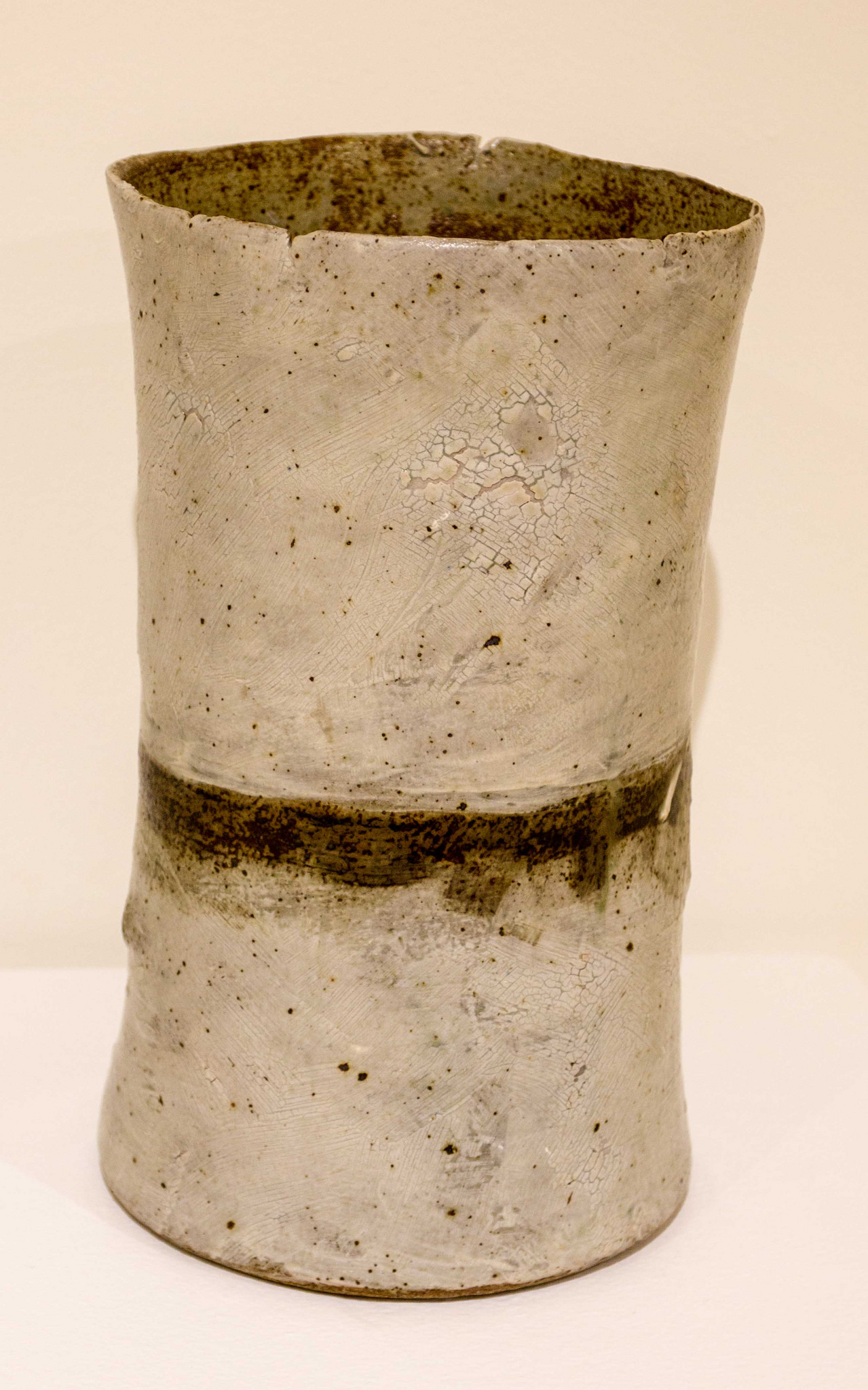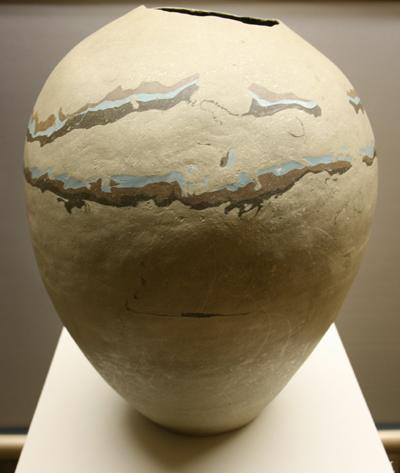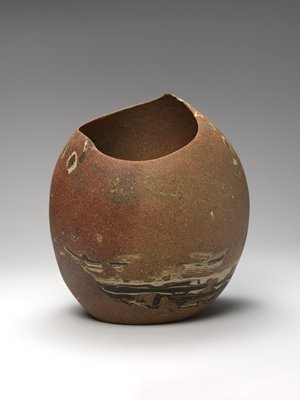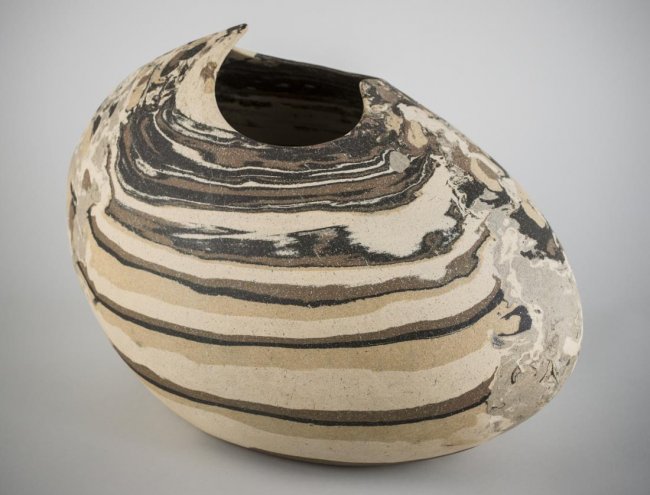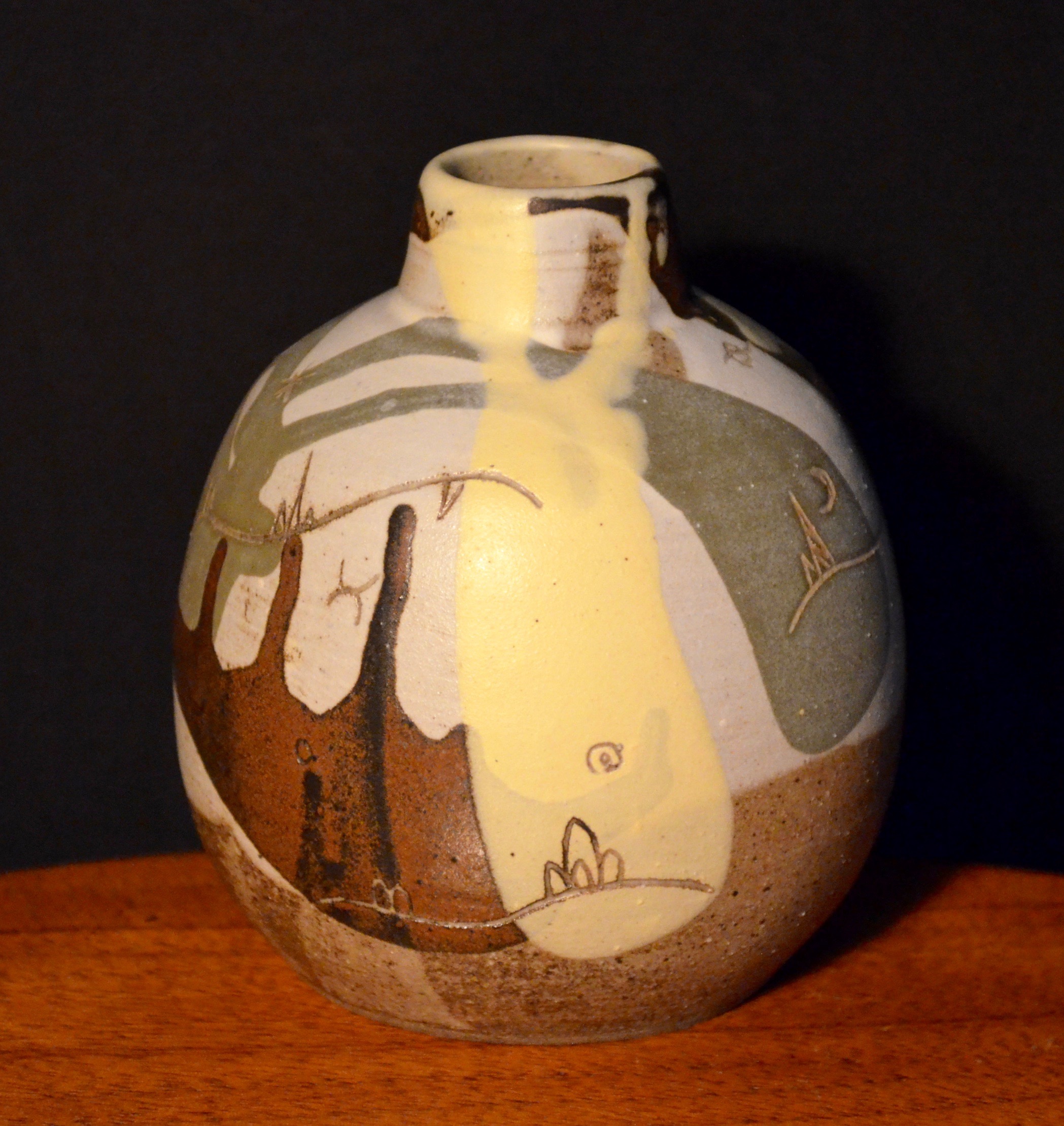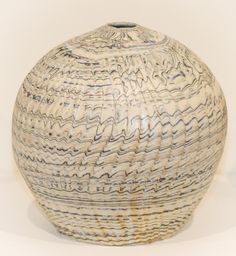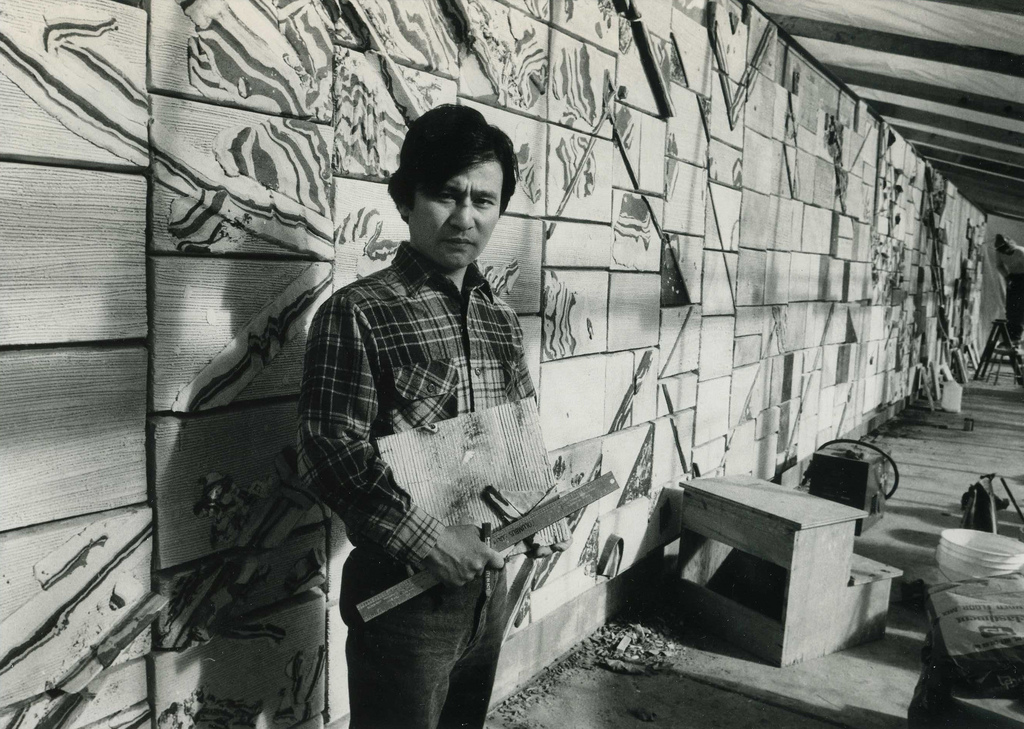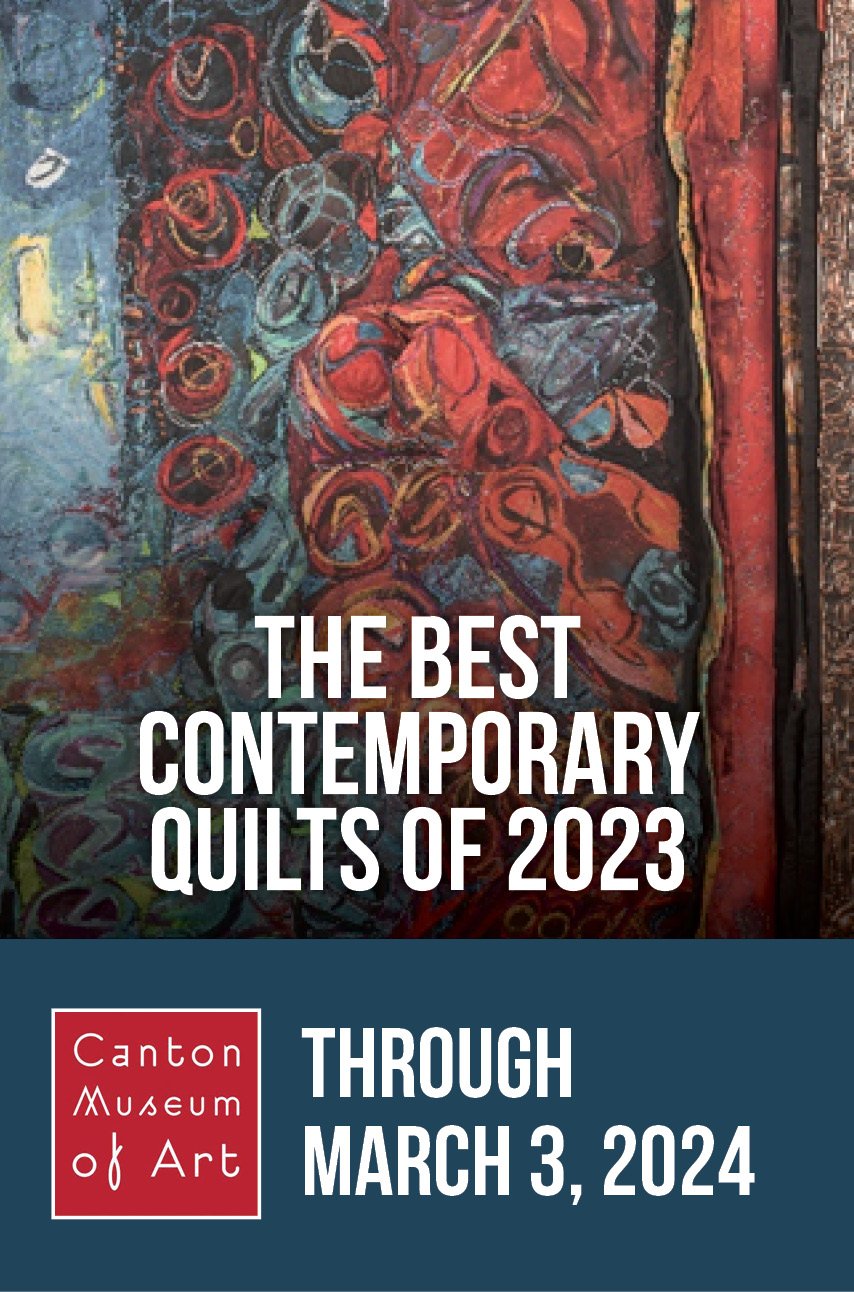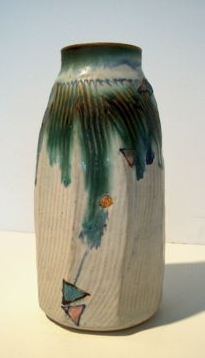Ban Kajitani, Japanese, B: 1941
Neriage Sculptural Vase • Neriage Stoneware 17-1/2" x 10" x 6"
In 1974 Japanese potter, Ban Kajitani, was driving a Jeep through the canyons of Capitol Reef National Park in southern Utah. The Utah State University grad student and ceramics teacher was stunned by the majestic canyon walls with their layers of different colored sedimentary rock. The canyons took his imagination back to medieval Chinese pottery he had seen many years before.
The ancient Asian artisans had layered and wedged different colored clays together, then carved and worked them into ceramics with stunning marbled effects. The complexity and colors were so much richer coming from the material rather than glaze coatings. When Kajitani returned to the University, he began to research the ancient technique, first named neriage or nerikomi over a thousand years after it was popularized by T’ang Dynasty potters.
China’s T’ang Dynasty was the Renaissance 700 years before Europe shook off the grip of the Dark Ages. For 300 years China experienced a golden age of artistry and culture until Mongol hordes swept over the mountains and wiped away the world’s most advanced civilization.
During the age of the T’ang Emperors, Asia was the center of the world. The capitol, Chang’an (Xian today) was the largest city in the world and overflowed with artists, poets and ceramicists. There, a marbled form of pottery became popular, although modern scholars think it may have first appeared in ancient Rome.
INTERESTING STORIES FROM OUR SPONSORS

The meticulous work of marbling clay was well suited to Asian artisans seeking to create simplicity out of complexity. Sands were hand colored to create distinctive clays that could be layered, cross-cut or wedged together to form the raw material. When these clay composites were carved, molded or worked on a wheel, the layers of color created sophisticated patterns. The beauty sprang from the clay, itself, rather than surface glaze. It was as if the work of creating a bowl or dish exposed the clay’s inner beauty.
Ban Kajitani became a modern-age master of Neriage and Nerikomi. In the Japanese language, “Neri” is the root word meaning to “pull up.” Neriage is, therefore, art of throwing multi-colored clays on a potters wheel where the walls are pulled up as the wheel spins. “Komi” means to “press into” making Nerikomi the art of hand building ceramics by either pressing them into a mold or carving multi-colored clay blocks.
Kajitani began experimenting with Neriage and Nerikomi while studying and teaching at Utah State University. He mastered the techniques while teaching for 16 years at the Columbus College of Art and Design before returning to his native Japan. There he turned the ancient art of throwing and molding multi-colored clays into a modern art form.
Two artists with the family name “Ban” gazed upon striated mountains 1,400 years apart. The multi-colored cliffs inspired both, creating a bridge over time between medieval China, modern Japan and Columbus, Ohio. The bridge can be seen at the Canton Museum of Art, today.
Canton Museum of Art Permanent Collection • Purchased from the collection of Bill and Liz Hunt, 2016.97
4 Ways to Sound Smart When Viewing at The Canton Museum of Art
1.
“His family name ‘Ban’ was the name of a famous Han Dynasty general. The Han Dynasty preceded the T’ang Dynasty.”
2.
“Most of his notable work is Neriage or Nerikomi, ancient Asian techniques using multi-colored clays to create marbling effects.”
3.
“In Columbus he is well known for both his large Nerikomi tile wall at CCA&D, and the garden sculptures he created for the Schottenstein Center. Unfortunately both fell apart and no longer exist.”
4.
“The difference between Neriage and Nerikomi is that one is worked on a potter’s wheel, while the other is molded, carved or built up. Don’t ask me which is which.”
Ban Kajitani Timeline. Scroll over images to see timeline.
